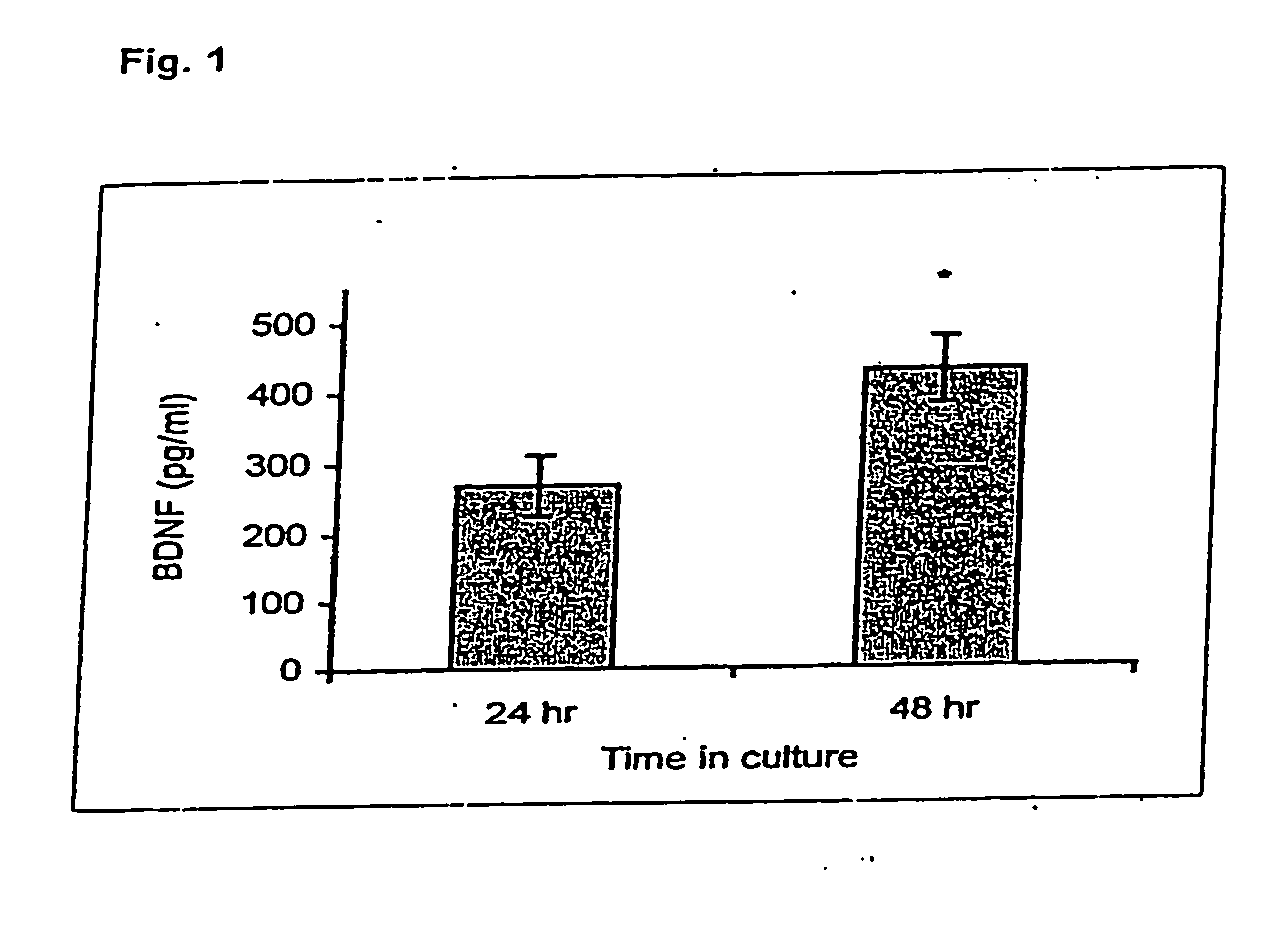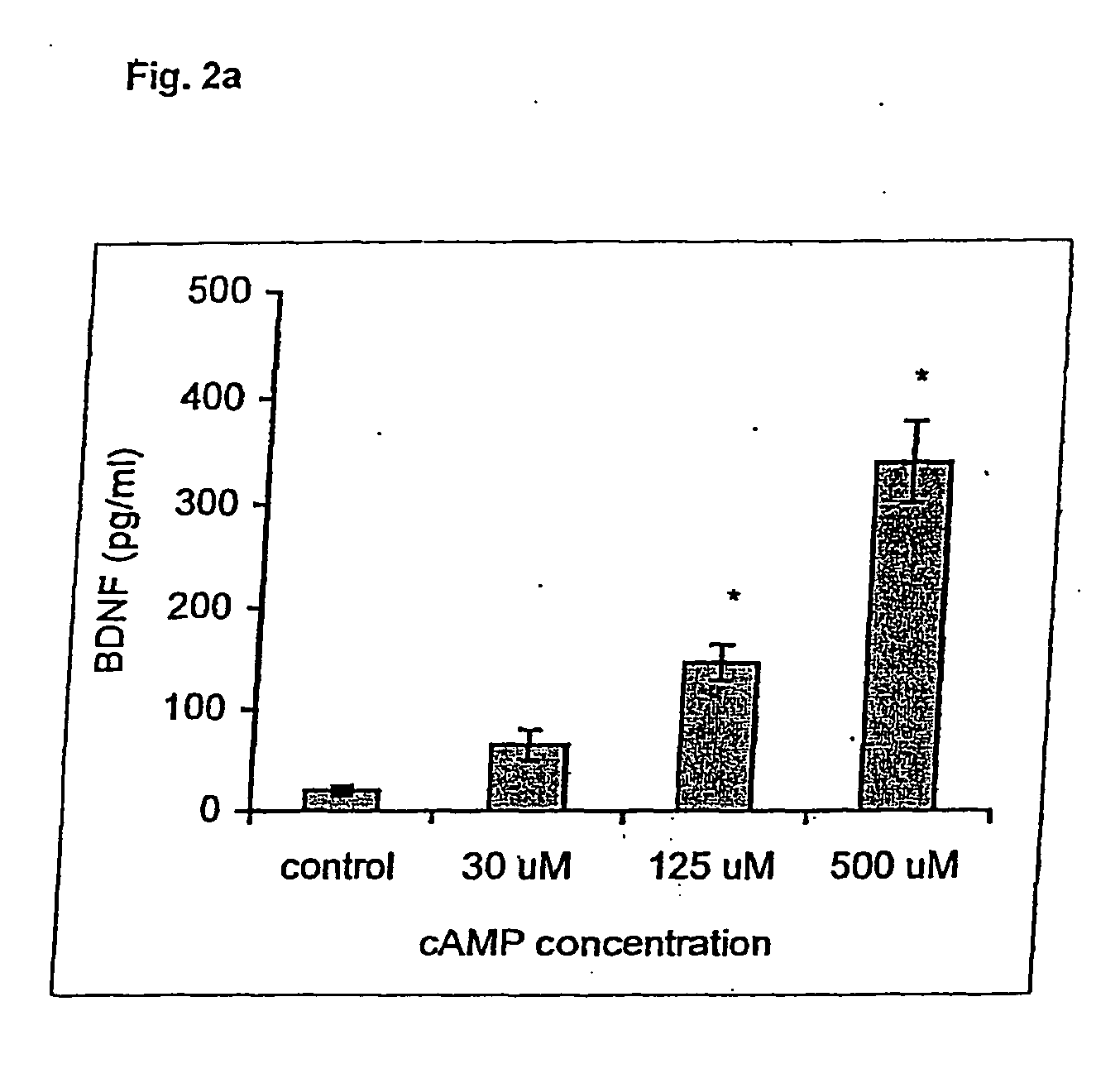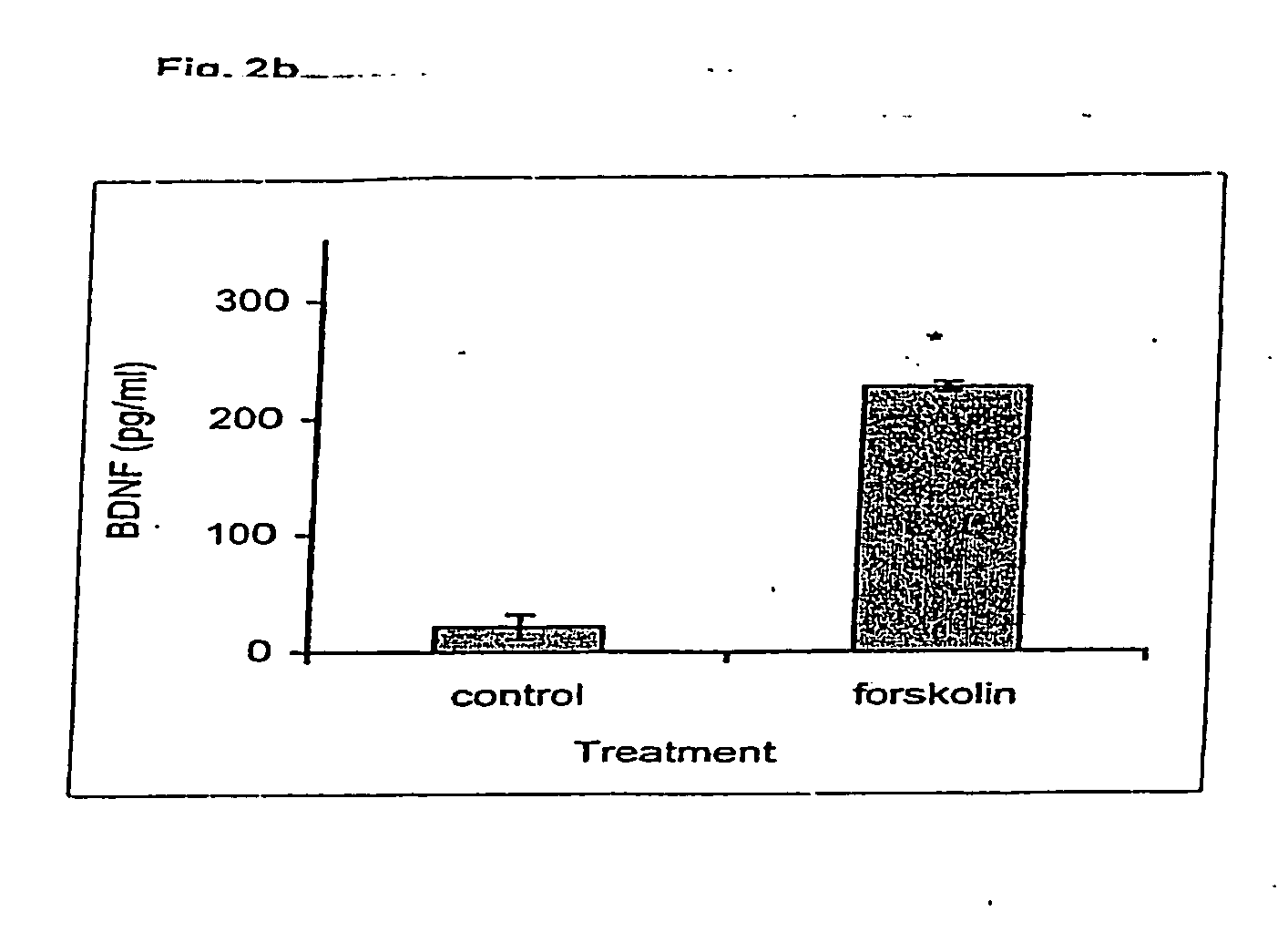Method of utilizing neurotrophins to manipulate reproductive capacity
a neurotrophin and reproductive capacity technology, applied in the field of reproductive endocrinology, molecular biology, and the regulation of reproductive factors in female subjects, can solve the problems of affecting the body's ability affecting the success rate of treatment, and affecting the ability of the body to perform the basic function of reproduction, etc., to stimulate oocyte production and maturation, and increase the fertility of female subjects
- Summary
- Abstract
- Description
- Claims
- Application Information
AI Technical Summary
Benefits of technology
Problems solved by technology
Method used
Image
Examples
example 1
[0063] The regulation of BDNF by gonadotropin stimulation to improve the probability of pregnancy is demonstrated through the use of 8-bromo-cAMP (see FIG. 2a). 8-bromo-cAMP increased BDNF production and secretion by 3.3 fold at 30 μM, 7.4 fold at 125 μM (p=0.02) and 17.1 fold at 500 μM (p=O.O2).
example 2
[0064] The regulation of BDNF by activation of the gonadotropin production pathway to improve the probability of pregnancy is demonstrated through the use of forskolin. See FIG. 2b. Forskolin, an activator of intracellular adenylate cyclase to elevate intracellular cAMP, which increased BDNF production by 11 fold (P=0.016).
example 3
[0065] The up-regulation of BDNF to improve the quality of oocytes for use in IVF and improve implantation rates and control the rate of meiosis. The percentage of oocytes demonstrating 1st polar body extrusion was higher after six (6) hours in the presence of 100 ng ml BDNF than in the control oocytes. Significantly higher rates of polar body extrusion in the presence of BDNF were seen at 20 hours (6.3% and 18.8%, p=0.017), 24 hours (6.3% and 20%, p=0.01) and 48 hours (7.5% and 21.3%, p=0.013) for control and treated oocytes, respectively. See FIG. 3.
Materials and Methods
[0066] Thirty-nine (39) women who were less than forty (40) years of age had follicular fluid containing granulosa cells aspirated while undergoing oocyte retrieval for in vitro fertilization (IVF). All had received leuprolide acetate (Lupron; Tap Pharmaceuticals, North Chicago, Ill.) for pituitary desensitization. After adequate suppression, two to eight ampules 150-600 IU of gonadotropins were given daily in d...
PUM
| Property | Measurement | Unit |
|---|---|---|
| concentrations | aaaaa | aaaaa |
| concentrations | aaaaa | aaaaa |
| concentrations | aaaaa | aaaaa |
Abstract
Description
Claims
Application Information
 Login to View More
Login to View More - R&D
- Intellectual Property
- Life Sciences
- Materials
- Tech Scout
- Unparalleled Data Quality
- Higher Quality Content
- 60% Fewer Hallucinations
Browse by: Latest US Patents, China's latest patents, Technical Efficacy Thesaurus, Application Domain, Technology Topic, Popular Technical Reports.
© 2025 PatSnap. All rights reserved.Legal|Privacy policy|Modern Slavery Act Transparency Statement|Sitemap|About US| Contact US: help@patsnap.com



